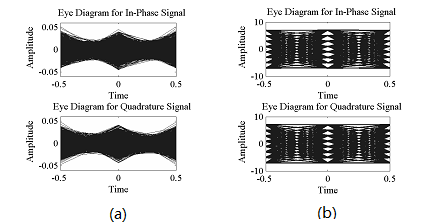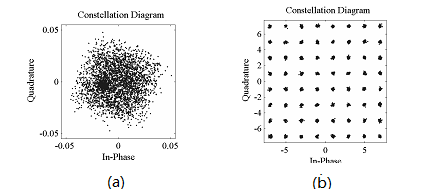Low frequency noise is inevitable for underwater vehicle applications. Active noise control (ANC) is widely used for its prominent advantages in comparison with objected solutions. However, active noise controller and secondary sources as well as error sensors usually locate in different sides of the shell. Wireless electromagnetic telecommunication method is unavailable due to the presence of Faraday shielding effect. Conventional wired techniques damage the structural wholeness of ships, which lead to much serious security problems.
Researchers from the Institute of Acoustics of the Chinese Academy of Sciences propose an acoustic data transmission structure for active noise control, specifically for controlling radiation noise of ships directly under the condition that the secondary sources locate outside the shell.
Researchers utilize penetration-free communication techniques to transmit data between active noise controller and sensors, where modulated signals are transmitted through metallic shell in the form of ultrasonic waves without physical damage to the ship.
Since system reliability plays a significant role, researchers add equalization algorithm to eliminate channel distortion, and carefully consider communication algorithm with ANC algorithm in order to achieve lower bit error rate. All the complicated signal processing procedures can be accomplished in central controller, which located in the inner side of the ship for convenience of signal tracing and updating.
Researchers then investigate optimized data transmission schemes for ANC. Results show the effectiveness of this scheme on compensating for channel distortion. Influences of time delay brought by the penetration-free acoustic data transmission channel are also discussed. Comparison of the simulation and real-time measurement results will improve this research in the future.
Figures below present the effects of various diagrams associated with the transmitted signals, received signals as well as equalized signals. Due to the presence of channel response signals, the eye diagram appears closed and indistinct as illustrated in Figure 1(a). The signal constellation diagram also becomes to be more scattered in the receiver as shown in Figure 2(a).
After channel equalization, constellation points reassemble around the original 64 plots and the eye pattern open again, as illustrated in Figure 1(b) and 2(b) respectively. The maximum error of this penetration-free acoustic data transmission channel is caused by the fixed-point processing, since the error of fixed signals between the transmitted and equalized under the same circumstance equals zero. The more bits researchers use for fixed-point processing, the higher precision would be acquired and thus resulting in smaller error.

Figure 1 – Eye diagrams for both in-phase and quadrature signals (a) In the receiver (b) After equalization (Image by YU Ziying).

Figure 2 – Constellation diagrams for signals of the penetration-free acoustic data transmission channel (a) In the receiver (b) After equalization (Image by YU Ziying).
Funding for this research came from the National Natural Science Foundation of China(No. 11674348 and 61501449).
References:
YU Ziying, WU Ming, YANG Jun. Penetration-Free Acoustic Data Transmission Based Active Noise Control. Proceedings of the 46th International Congress and Exposition on Noise Control Engineering, 2017.
Contact:
YU Ziying
Key Laboratory of Noise and Vibration Research, Institute of Acoustics, Chinese Academy of Sciences, 100190 Beijing, China
E-mail: yuziying@mail.ioa.ac.cn


